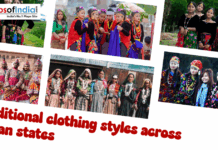Polio Vaccination Programs in India:
Polio was an endemic disease in India. The first official vaccination program against this terminating disease started in 1978 with the Expanded Program in Immunization (EPI). EPI had been partly successful in its immunization efforts of 40% children, mostly infants. In 1985, a more comprehensive program, designated the Universal Immunization Program (UIP) was implemented, envisaged to cover all the districts of the nation, which later became an extension of the Child Safe and Survival Motherland Program (CSSM) in 1992, and Reproductive and Child Health Program (RCH) in 1997. The number of polio cases had significantly dropped from 28,757 in 1987 to 3,265 in 1995.
India had implemented the Pulse Polio Immunization Program parallel to the Universal Immunization Program in 1995, following the model of the Polio Eradication Initiative of the World Health Organization (1988). The program was dedicated to the 100% immunization and eradication of this accursed disease. The program proved to be an exceptional success, paving the way for India to be declared polio-free nation by the WHO in 2014.
January 13th, 2013 – India records two consecutive polio free years:
On January 13th, 2013, India had celebrated its two consecutive years without any reported case of polio, a groundbreaking achievement in public healthcare for a country where a 100% elimination of polio was considered impossible. Against the heavy odds of a huge population, poverty, a rickety health and medical infrastructure, the country had amazingly achieved the impossible feat of almost completely eradicating polio. At this juncture, the responsibility of the country had been immense, because for the polio free certification of the WHO, the country had needed to be extra careful to be free of this disease for another year.
So, India had stepped up its schedule for fighting this dreadful disease. With the proximal existence of Pakistan and Afghanistan, where Polio is still rampant and an import of the virus from these neighboring countries had remained a consistent and severe threat. However, India had pursued its vaccination and vigilance programs quite aggressively, and had achieved the immunization of more than 98% children in 2013, especially in the high risk zones.
The fight against polio is a continuous and arduous battle, especially in the light of the fact that since 2000, 44 countries recorded as polio-free, had witnessed outbreaks of polio. Under the circumstances, the consistent endeavors of India as polio-free nation will extend into 2014 as two separate countrywide campaigns. Such campaigns will involve the accumulation of 2.3 million vaccinators, aiming at achieving the immunization of approximately 172 million children of the country.
India will also be proactive in extending its vaccination programs to the most inaccessible and assailable children, pertaining to the migratory population by reaching them at transit points, such as railway stations, especially during nationwide festive seasons such as the Diwali, when the concentration of such migrating groups are expected to be highest. A troop of 450 mobile vaccination units have been earmarked to be deployed throughout the country for such purposes. Vaccination outposts, in the form of immunization booths have been implemented in the border areas with Nepal and Pakistan, to prevent an import of the virus from neighboring countries. Even the Haj pilgrims are being addressed for an annual immunization under this program.
However, for the tenable extermination of the disease, it is necessary that the endeavors of India to fight polio are not delimited by the geograph
Read More….
‘Leptospirosis’: A Deadly Disease in the Andamans




